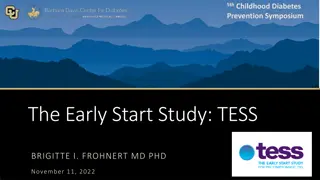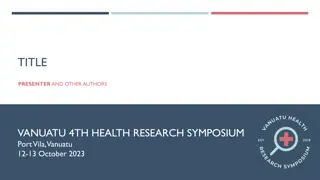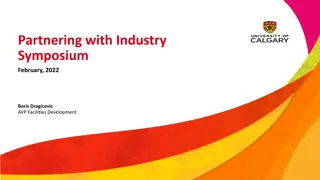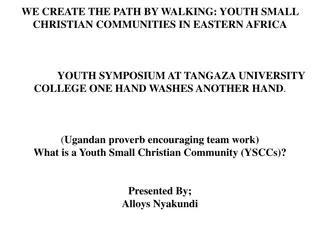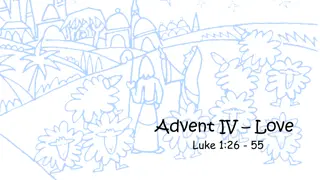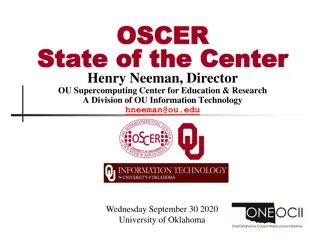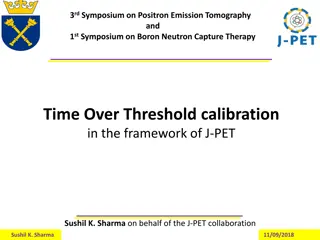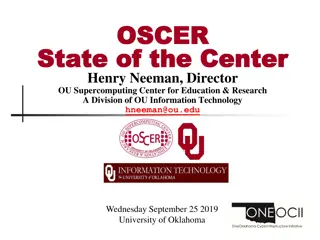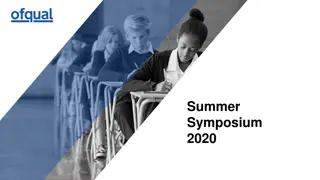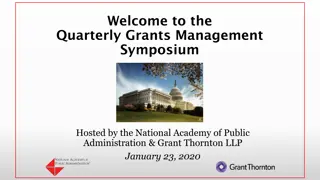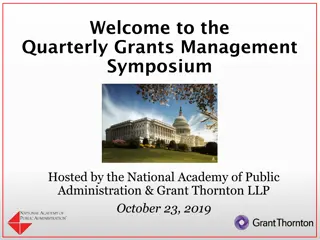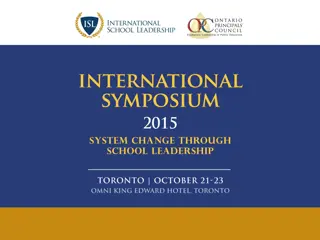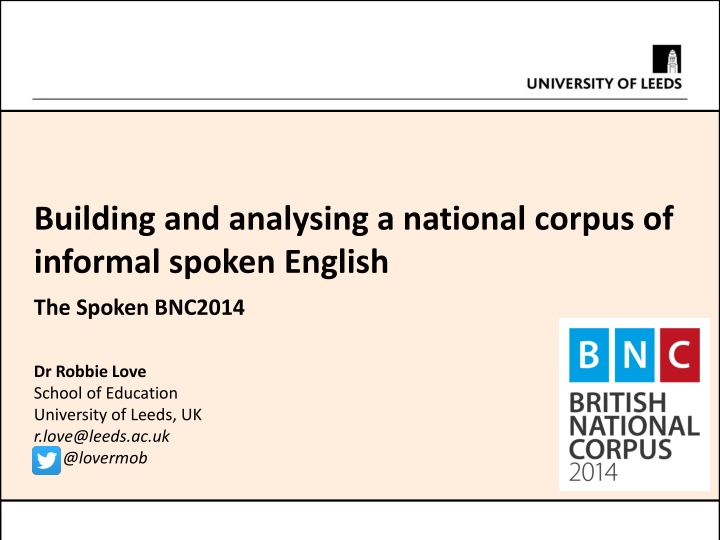
Building and Analyzing a National Corpus of Informal Spoken English
Explore the Spoken BNC2014 project led by Dr. Robbie Love at the University of Leeds, UK, focusing on the British National Corpus (BNC) of 1994 and the recent Spoken BNC2014. Learn about representativeness in corpus design, the target domain, linguistic representativeness, and the phases of the BNC2014 project. Discover the significance of the BNC2014 as a resource for research and teaching in British English.
Download Presentation

Please find below an Image/Link to download the presentation.
The content on the website is provided AS IS for your information and personal use only. It may not be sold, licensed, or shared on other websites without obtaining consent from the author. If you encounter any issues during the download, it is possible that the publisher has removed the file from their server.
You are allowed to download the files provided on this website for personal or commercial use, subject to the condition that they are used lawfully. All files are the property of their respective owners.
The content on the website is provided AS IS for your information and personal use only. It may not be sold, licensed, or shared on other websites without obtaining consent from the author.
E N D
Presentation Transcript
Building and analysing a national corpus of informal spoken English The Spoken BNC2014 Dr Robbie Love School of Education University of Leeds, UK r.love@leeds.ac.uk @lovermob
Plan 1. The BNC2014 2. Representativeness in corpus design 3. What does the Spoken BNC2014 represent? 4. Recent change: the case of literally 5. Conclusions 2 robbielove.org
The BNC2014 3 robbielove.org
The British National Corpus (1994) a corpus of 100 million words of written texts and spoken transcriptions of modern British English, to be stored on the computer in machine-readable form (Leech 1993: 9) Oxford University Press Longman Chambers Harrap Oxford University Computing Services Lancaster University British Library http://www.natcorp.ox.ac.uk/ 4 robbielove.org
The BNC2014 project 5 robbielove.org
The BNC2014 project Broadly comparable to the BNC1994, compiled two decades later A new resource for research and teaching 90 million words of written British English, variety of registers 10 million words of spoken British English, one register = casual conversation Led by Tony McEnery Phase 1 (2014-2017) = Spoken BNC2014 Lancaster University + Cambridge University Press Phase 2 (2015-present) = Written BNC2014 Lancaster University 6 robbielove.org
Representativeness in corpus design 7 robbielove.org
Corpus design Every corpus is a sample of something Biber (1993) Define the target domain (population) Design the corpus (sampling frame) Gather some of the corpus data Evaluate two types of representativeness target domain representativeness linguistic representativeness Repeat until maximal representativeness is achieved 8 robbielove.org
Corpus design Samples lie on a continuum (Phillips & Egbert 2018: 108) of design regimes Probability sampling Convenience sampling Target domain is known Target domain is not known Take a random sample of texts from the target domain Create a sampling frame to best approximate the target domain 9 robbielove.org
Sampling spoken British English Without representativeness, whatever is found to be true of a corpus, is simply true of that corpus and cannot be extended to anything else. (Leech 2007) How can a corpus be representative of the spoken British English language if one cannot accurately say, in concrete terms, what does and does not constitute the spoken British English language ? Even a large national spoken corpus is a tiny, tiny sample of the language population 10 robbielove.org
The Spoken BNC2014: design Original design: Informal spoken British English, produced by L1 speakers of British English in the mid-2010s, whereby British English comprises four major varieties: English, Scottish, Welsh and Northern Irish English. (Love 2020) Promise and expectation of comparability with BNC1994 But: just one register informal conversation Priority = England; aim for rest of UK Spread of age, gender, region, socio-economic status etc. But: no pre-determined category sizes i.e. non-stratified convenience sample 10 million words 11 robbielove.org
The LLC-2: design LLC 2 contains seven broad text categories representing a wide range of speech settings in which people participate in the 21st century, either as speakers or listeners. (P ldvere 2019) Stratified convenience sample Range of spoken registers 2014-2019 Compromise between comparability with the LLC-1 and modern representativeness (e.g. landline phone calls replaced with mobile/Skype calls) 500,000 words 12 robbielove.org
What does the Spoken BNC2014 represent? 13 robbielove.org
The Spoken BNC2014 Conversational, L1 British English 2012-2016 672 speakers 1,251 texts 11,422,617 words Freely available to the public: (1) on Lancaster s CQPweb (2) BNClab (3) file download http://corpora.lancs.ac.uk/bnc2014/ 14 robbielove.org
Target domain representativeness 70 60 50 40 30 20 10 0 Male Female Spoken BNC2014 UK population 2014 (Love 2020) 15 robbielove.org
Linguistic representativeness Randomly divided corpus into 10 roughly equal parts Frequency of eight major POS categories (85.5% of all tokens) Tolerable deviation of +/- 5% from mean (Biber 1993) POS category mean (%) standard deviation normalised deviation (%) adjective 3.97 0.04 0.98 Frequency is stable across the 10 parts adverb 10.07 0.15 1.50 determiner 9.68 0.07 0.68 interjection 6.22 0.17 2.72 noun 11.84 0.16 1.33 preposition 5.86 0.07 1.28 pronoun 14.89 0.13 0.85 verb 22.97 0.17 0.72 (Love 2020) 16 robbielove.org
What does it represent? Revised target domain: The Spoken BNC2014 represents informal spoken English, produced by L1 speakers of British English, in England, in the mid-2010s. (Love 2020) Within England, it represents a spread of demographics including gender, age, socio- economic status and region Comparable in terms of register to the Spoken BNC1994 (demo. sampled) 17 robbielove.org
Recent change: the case of literally (Curry, Love & Goodman in prep) 18 robbielove.org
Indirect corpus applications in ELT One application of spoken corpora language teaching Nowadays it is commonplace for materials for language learning to be corpus informed Recent change in spoken English comparing to the Spoken BNC1994 to inform the development of their ELT materials, including English course books, exam preparation materials and grammar references Case study: adverbs Owing to current research on their value for ELT learners (e.g. P rez- Paredes & Mark, forthcoming) 19 robbielove.org
Recent change in adverb use 120,000 1,800 1,600 100,000 1,400 80,000 1,200 1,000 60,000 800 40,000 600 400 20,000 200 0 0 BNC1994 BNC2014 rel. freq. types (Curry, Love & Goodman in prep) 20 robbielove.org
literally in the news 21 robbielove.org
literally Use of literally has increased from 19 per million in the 1990s to nearly 200 per million in the 2010s Competition between two main usages literal we were literally getting into the car and it was about half past seven metaphorical/figurative oh I literallyhaven t moved all day metaphorical literally is more than twice as common now as it was in the 1990s 22 robbielove.org
literally 90 80 70 60 50 40 30 20 10 0 literal non-literal 1994 2014 (Curry, Love & Goodman in prep) 23 robbielove.org
Response from materials writers Based on the analysis, we have evidence of notable language change at the level of adverb use in casual spoken English. This change occurs not only in frequency, but also in syntax and function This evidence has surprised materials writers, challenged preconceptions and has changed the representation of language in materials in a number of ways According to experts in materials writing and teacher training, overall, corpora are effective and useful in dispelling myths, guiding choices and empowering teachers and learners with real language use However, they stress the importance of taking a critical approach to using the data (Curry, Love & Goodman in prep) 24 robbielove.org
Conclusions 25 robbielove.org
Conclusions BNC2014: a contribution to corpus linguistics and beyond Deficiencies in corpus design are too often overlooked It is important to be honest, critical and realistic about design issues such as representativeness We have aimed to maximize efficiency and quality of corpus construction in view of practical constraints There is no one right way to do this corpus construction is a process of compromise Process is justified and transparent, including weaknesses The corpus can be used to look at recent change in spoken English, and this is already starting to inform ELT materials 26 robbielove.org
Thank you http://corpora.lancs.ac.uk/bnc2014/ @lovermob r.love@leeds.ac.uk 27 robbielove.org
References 1. Biber, D. (1993). Representativeness in corpus design. Literary and Linguistic Computing, 8(4), 243-257. 2. Curry, N., Love, R., & Goodman, O. Keeping up with language change: Using the Spoken BNC2014 in ELT materials development. 3. Leech, G. (1993). 100 million words of English. English Today, 9-15. DOI: 10.1017/S0266078400006854 4. Leech, G. (2007). New resources, or just better old ones? The Holy Grail of representativeness. In: Corpus Linguistics and the Web. Rodopi, Amsterdam, pp. 133-149. 5. Love, R. (2020). Overcoming challenges in corpus construction: the Spoken British National Corpus 2014. New York: Routledge. 6. Love, R., Dembry, C., Hardie, A., Brezina, V., & McEnery, T. (2017). The Spoken BNC2014: Designing and building a spoken corpus of everyday conversations. International Journal of Corpus Linguistics, 22(3), 319-344. 7. P rez-Paredes, P. and Mark, G. (forthcoming) Adverbs in spoken language: a corpus-based analysis of learner and native-speaker language and its pedagogical implications. Studies in Corpus Linguistics series. Amsterdam: John Benjamins. 8. Phillips, J.C. & Egbert, J. (2018). Advancing law and corpus linguistics: Importing principles and practices from survey and content-analysis methodologies to improve corpus design and analysis. Brigham Young University Law Review, 2017(6), 101-131. 9. P ldvere, N. (2019). What's in a dialogue? On the dynamics of meaning-making in English conversation. Lund: Media-Tryck, Lund University, Sweden. 28 robbielove.org



